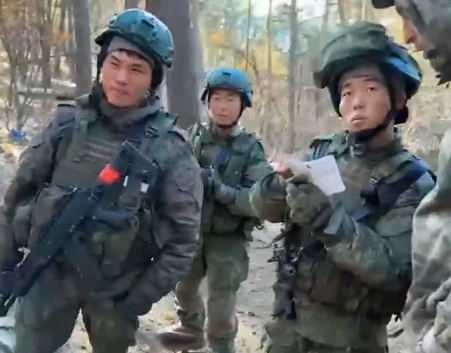We instantly recognize many countries by their flags: the United States’ Stars and Stripes, the UK’s Union Jack, New Zealand’s Southern Cross, Lebanon by the Cedar tree, Israel by David’s Star, and Japan’s red circle on a white background.
Ukraine, too, has its recognizable national symbols: the blue-and-yellow flag and the Golden “Tryzub,” or Trident.
JOIN US ON TELEGRAM
Follow our coverage of the war on the @Kyivpost_official.
The colors of the Ukrainian flag – blue and yellow – are conventionally believed to stand for “spacious skies above the fruited plain.”
The real meaning is different and far deeper. It goes back to the mid-13th century, when King Danylo of Halych ruled a strong Ukrainian state whose lands spread across the major part of present-day Lviv, Ivano-Franskivsk, Volyn, Ternopil, Khmelnytsky, and Chernivtsi regions in western Ukraine. Danylo’s coat of arms showed a rampant golden lion on an azure field.
King Danylo’s coat of arms
Danylo named his eldest son Lev (Ukrainian for “Lion”) and named the city he built for him Lviv (the possessive case of “Lev,” meaning “Lion’s Town”).
Lviv became the capital of the Ukrainian state and one of the biggest centers of trade, religion and education in Europe, flourishing for several centuries until its larger, western part, was taken over by the Austro-Hungarian Empire.

Washington Insider – How Biden’s Team Fumbled Ukraine
By heraldry rules, the upper side of the flag ought to represent the main image or pattern in a coat of arms (in this case the golden lion) and the lower the background. So, the Ukrainian flag ought to be the reverse of its current color scheme – golden above and azure beneath.
But the Ukrainian People’s Republic, the first independent Ukrainian state proclaimed in 1918, adopted this as the national flag:
State flag of the Ukrainian People’s Republic
Recognized and welcomed but unaided by the major European powers, the nascent independent state was unable to single-handedly withstand the onslaught of the Russian Bolshevik army.
It was invaded, crushed, drowned in blood and plunged into seven decades of Communist rule, with its yellow-and-blue flag stigmatized as a symbol of “Ukrainian militant nationalism.”
The members of the Ukrainian parliament who in 1992 approved the blue-and-yellow flag as the state symbol must have had poor knowledge of history and heraldry… And quite a few home-bred “experts” even blame all misfortunes that befall Ukraine on the “reversed” colors, claiming that life in this country will never change for the better if its flag remains upside down.
Ukraine celebrates its Flag Day on Aug. 23, the day before Independence Day, but the blue-and-yellow flag was first hoisted at the entrance to the Kyiv City Hall on July 24, 1990, more than a year before the nation proclaimed independence. It had been banned by Russia in its Soviet guise since the first attempt to establish an independent Ukrainian state back in 1918-20.
The memorial plaque reads “Ukrainian national flag hoisted July 24, 1990”
That day, more than 200,000 people gathered in front of the City Hall on Khreshchatyk Street to watch the historic ceremony while nearly a thousand Soviet law enforcers were on guard and ready to act at any moment.
The Ukrainian flag hoisted near the Kyiv City Hall on Khreshchatyk Street. Kyiv, July 24, 1990.
According to Volodymyr Bondarenko, the then deputy mayor of Kyiv, it was a truly historic day for all Ukraine, not only its capital.
“In terms of significance, that event could be compared to the adoption of the Declaration of State Sovereignty in 1990,” Bondarenko said in an interview on July 24, 2020.
“In spite of fierce resistance, threats and foot-dragging [by the Communists in the Kyiv City Council], the state flag of Ukraine did rise above the Kyiv City Hall. Nearly a thousand special force men didn’t dare to go against two hundred thousand people who gathered on Khreshchatyk. That was also thanks to the titanic efforts of the Democratic bloc in the Kyiv City Council,” Bondarkenko said.
“I’m immensely grateful to those people for their courage and uncompromising perseverance. That was one of the starting points when our nation really affirmed that it wouldn’t deviate from the path of independence,” he said.
Oleksandr Mosiyuk, the then deputy head of the Kyiv City Council who pronounced the Council’s decision to hoist the national flag to the crowd on Khreshchatyk, reminisces in his book, “Flag Day”:
“The first vote for hoisting the blue-and-yellow flag in front of the Kyiv Rada was on Friday, July 20, 1990, but we, representatives of the Democratic bloc, failed to outvote the opposing Communists. That day, the presidium meeting nearly turned into a fistfight. Finally, we managed to pass a draft resolution on hoisting the Ukrainian flag and appoint the vote for Tuesday, July 24.”
Jubilation under the Ukrainian flag in front of the Kyiv City Hall. July 24, 1990
Now, 34 years after that historic event, the Ukrainian nation consciously perceives its flag as part and parcel of its identity and independence.
Soaked with the blood of Ukrainian patriots, to Russians, this flag has for centuries been like a red rag to a bull. Pierced by shrapnel and bullets, this flag now shows the liberation of a Ukrainian city or village from the Russian invaders. And so many blue-and-yellow flags fly mournfully at the graves of fallen defenders…
Ukrainian flag on the roof of the village council in Robotyne, Kherson region, liberated Aug. 22, 2023
But a great many more will fly throughout the country on Flag Day and again on Independence Day in August as the proud symbol of Ukraine’s independent statehood and – sooner or later, but definitely – as a jubilant symbol of its victory.
You can also highlight the text and press Ctrl + Enter

















